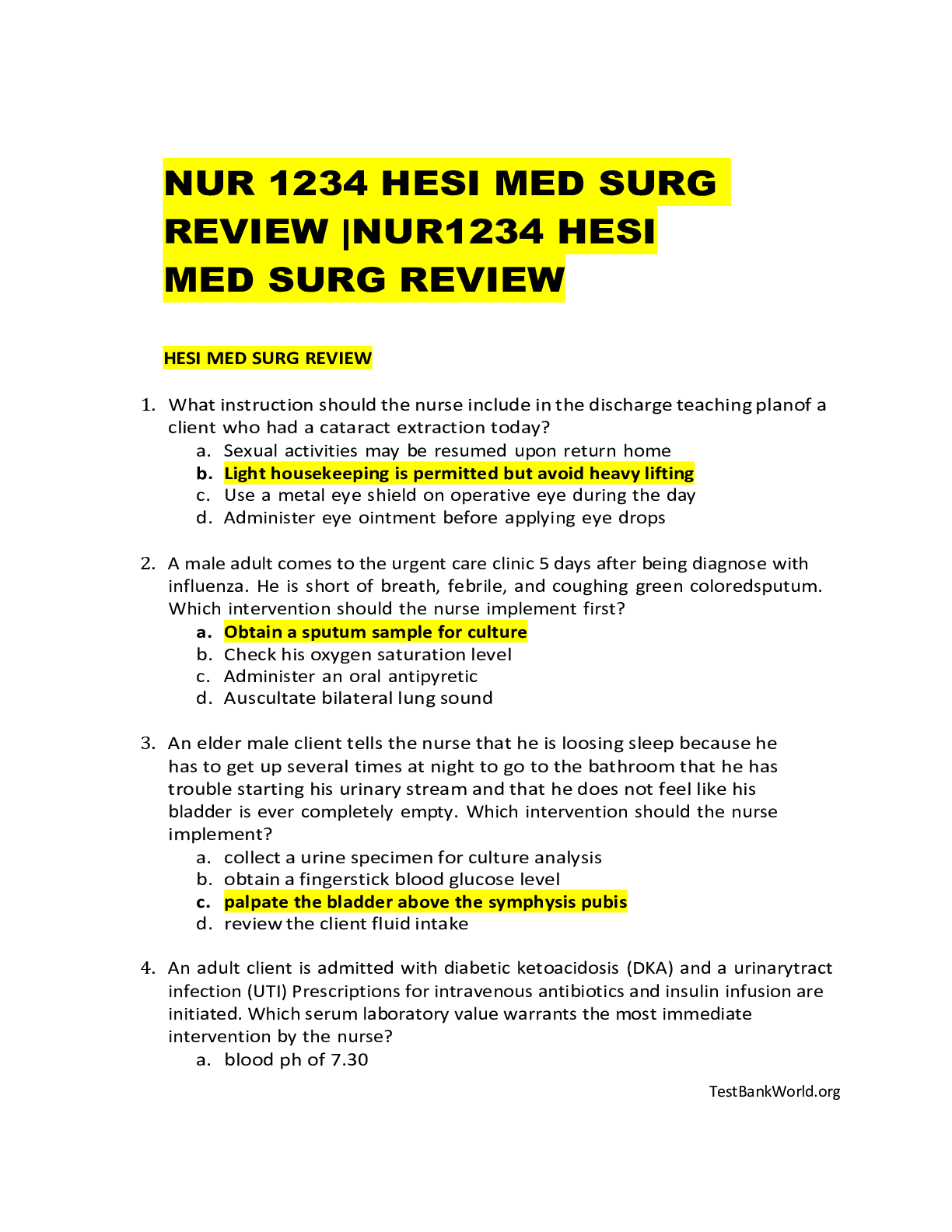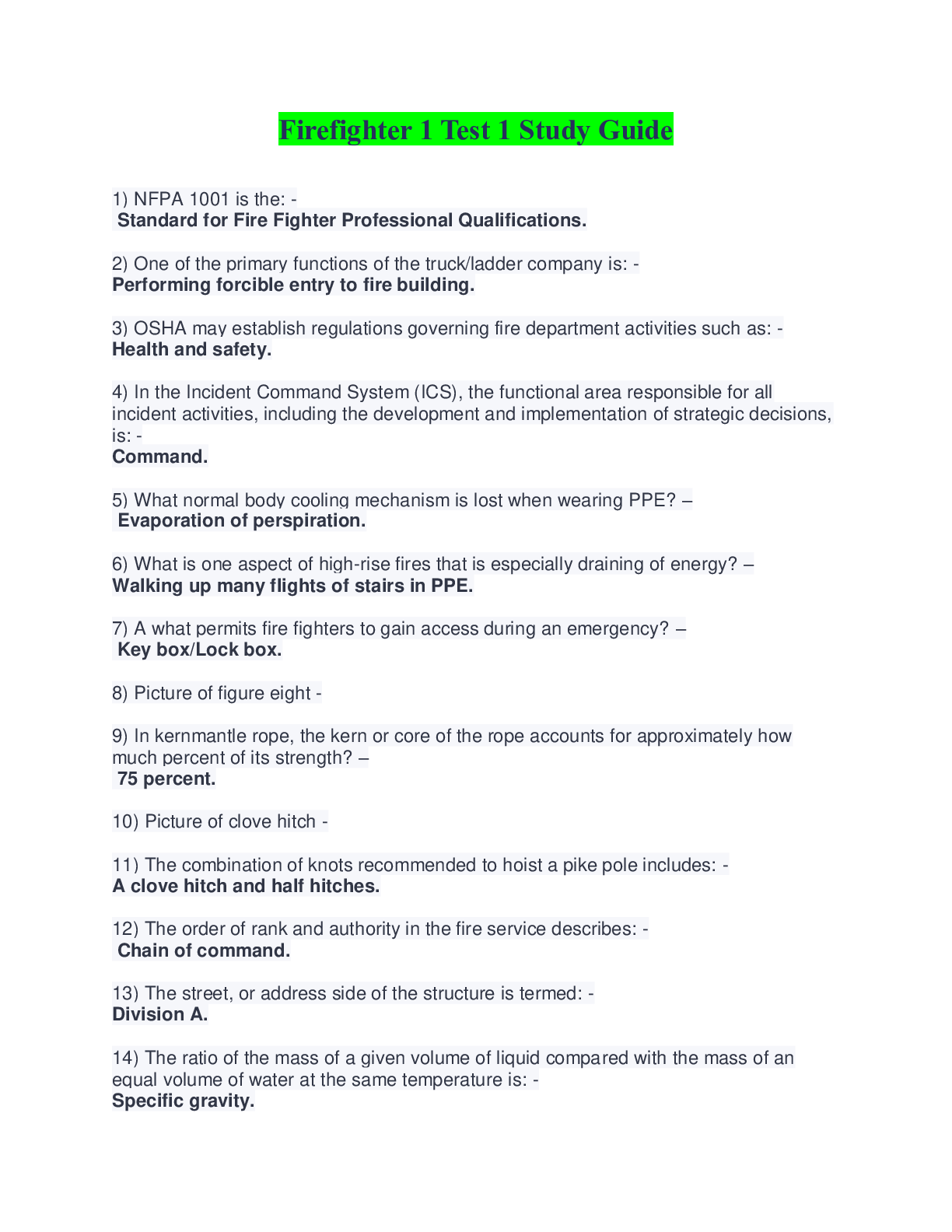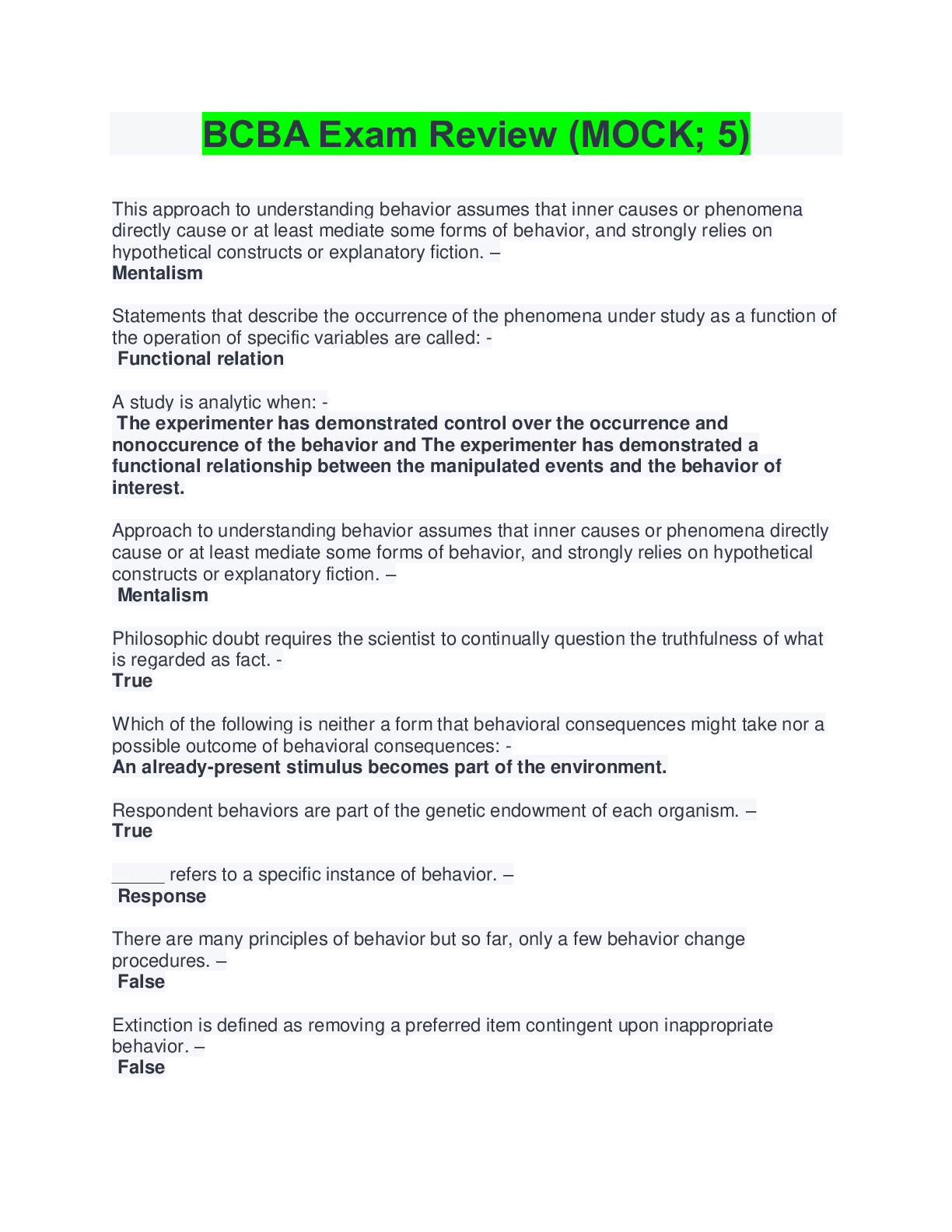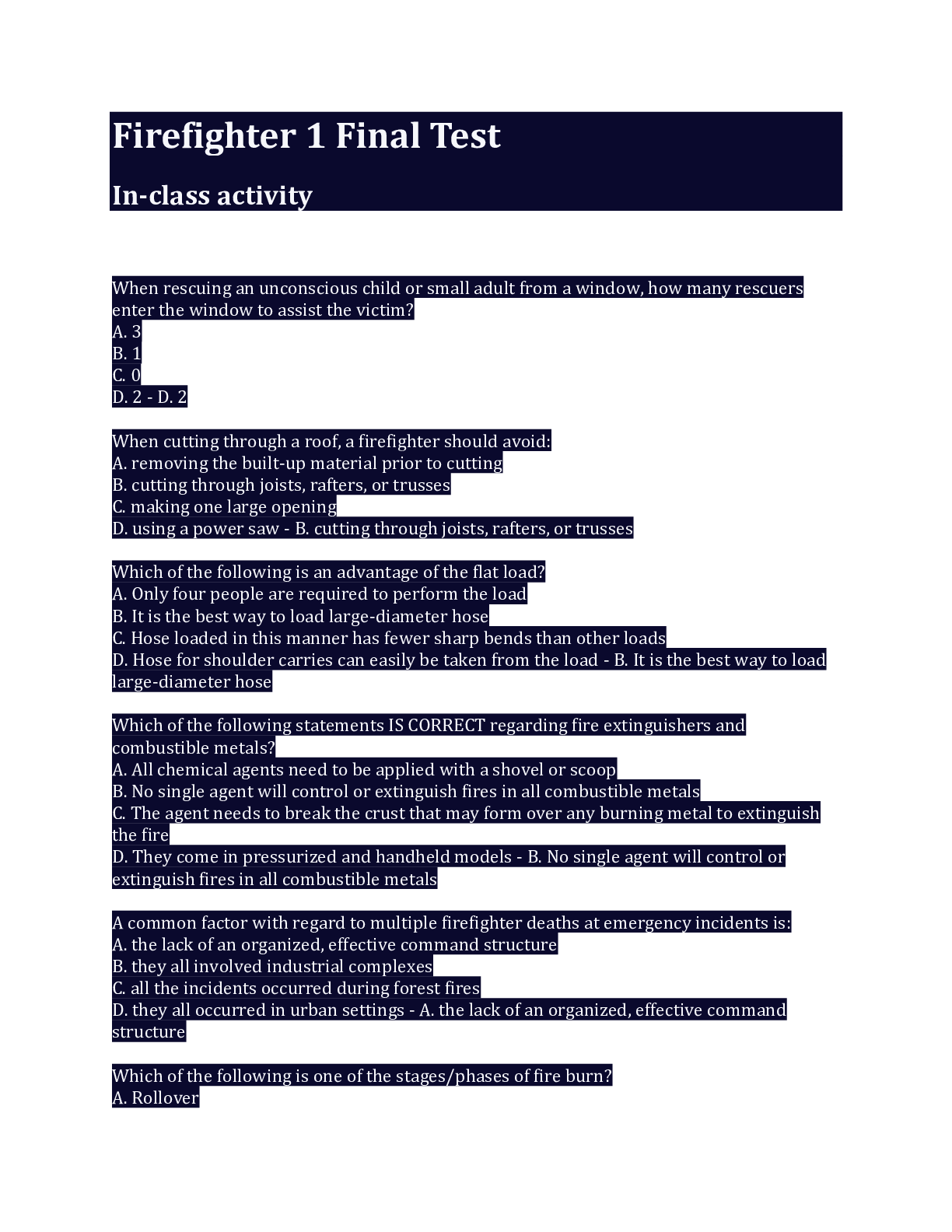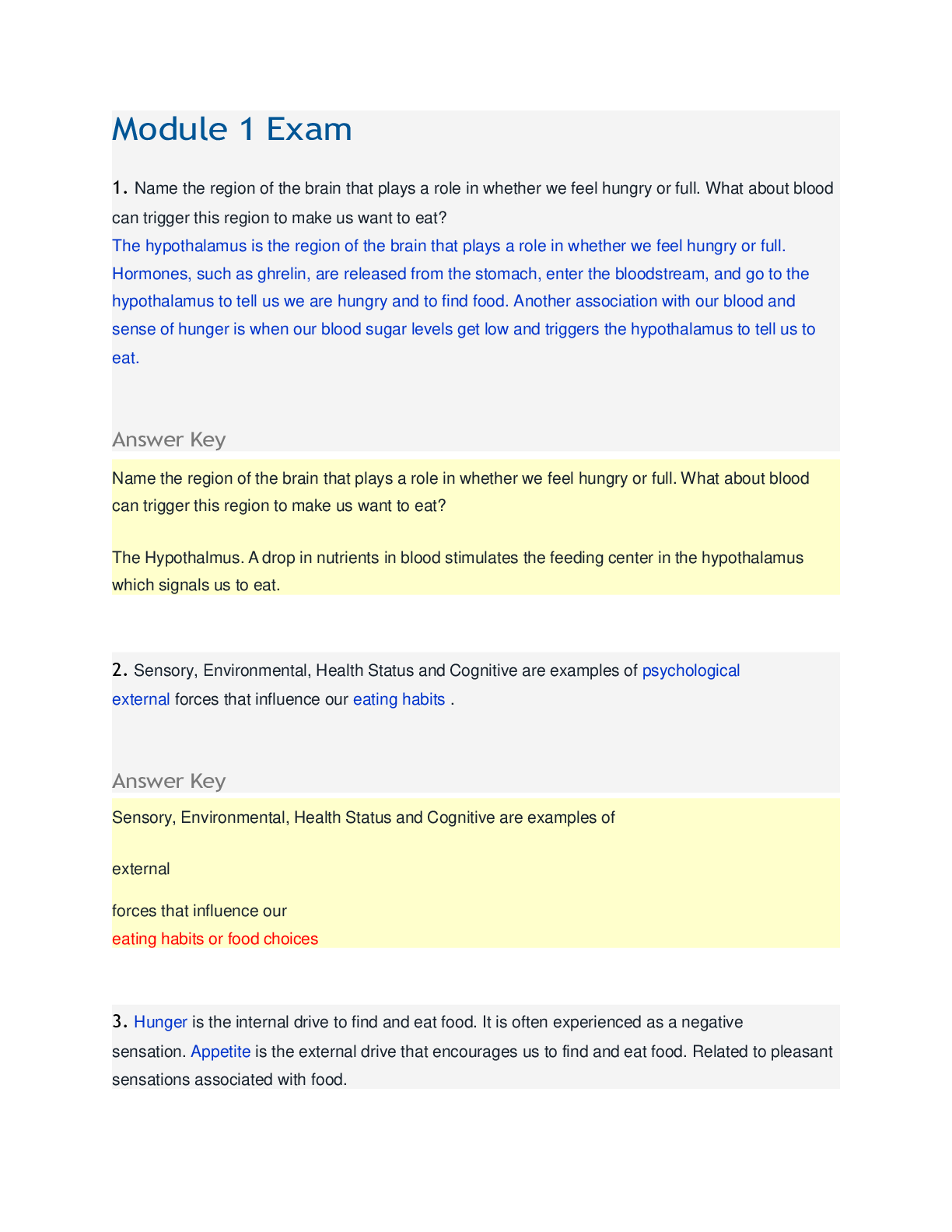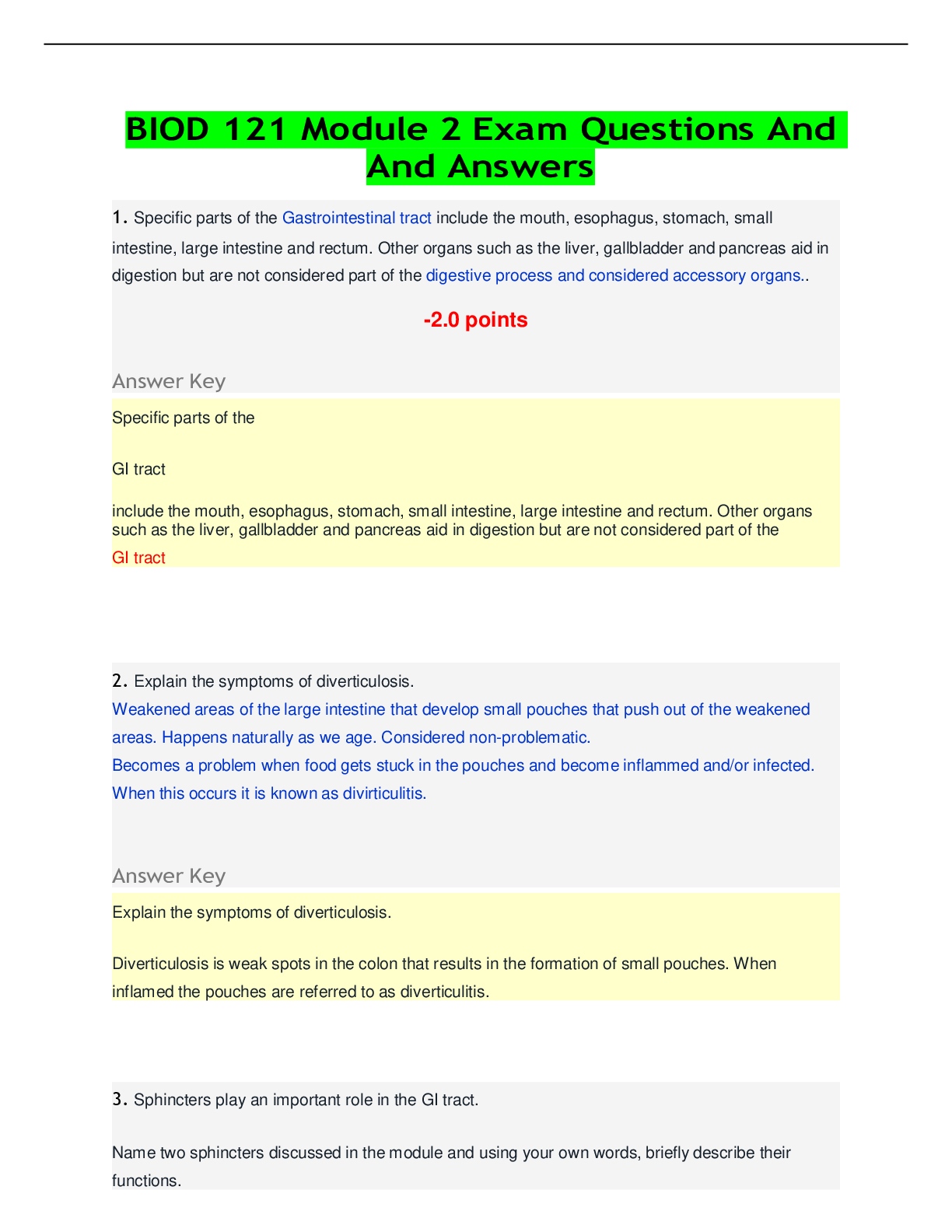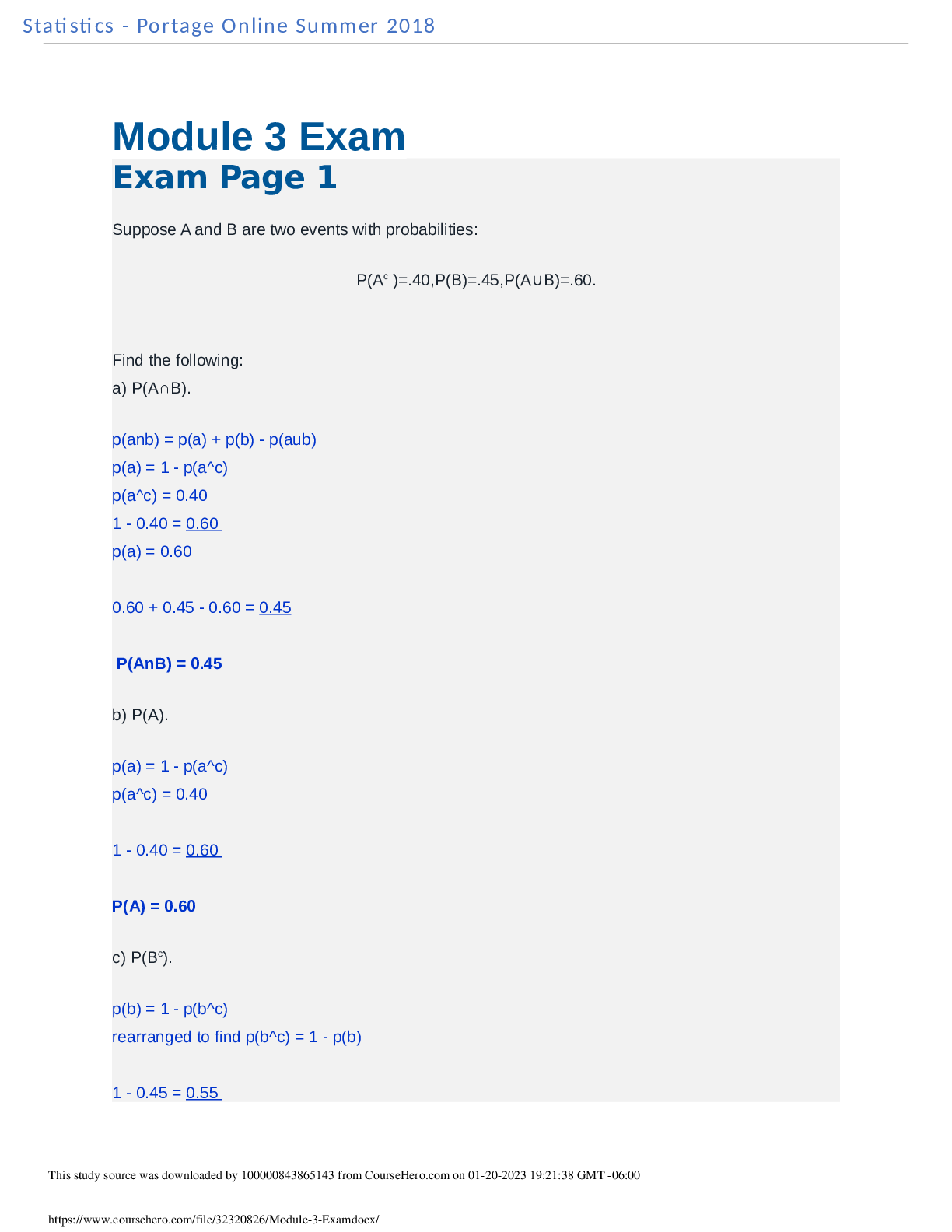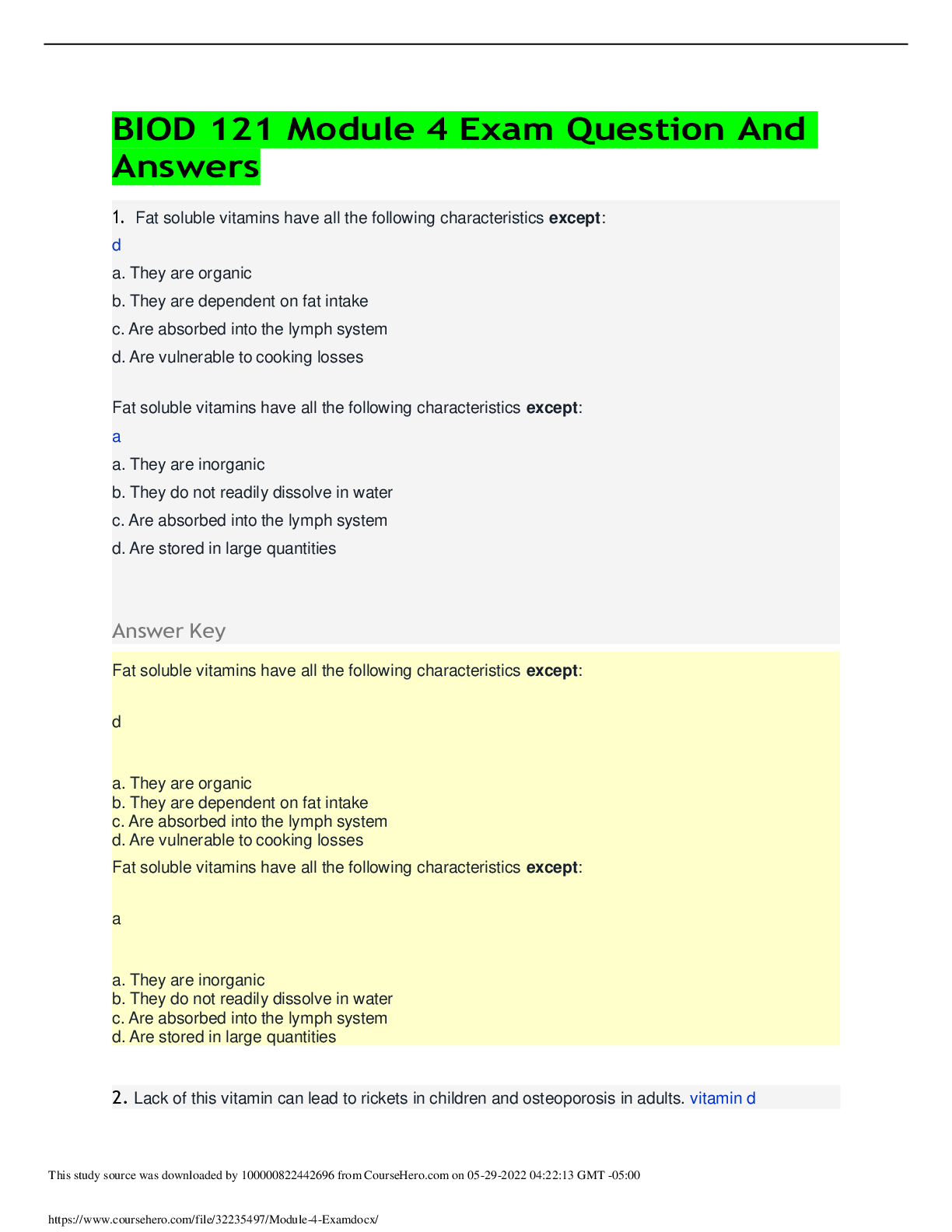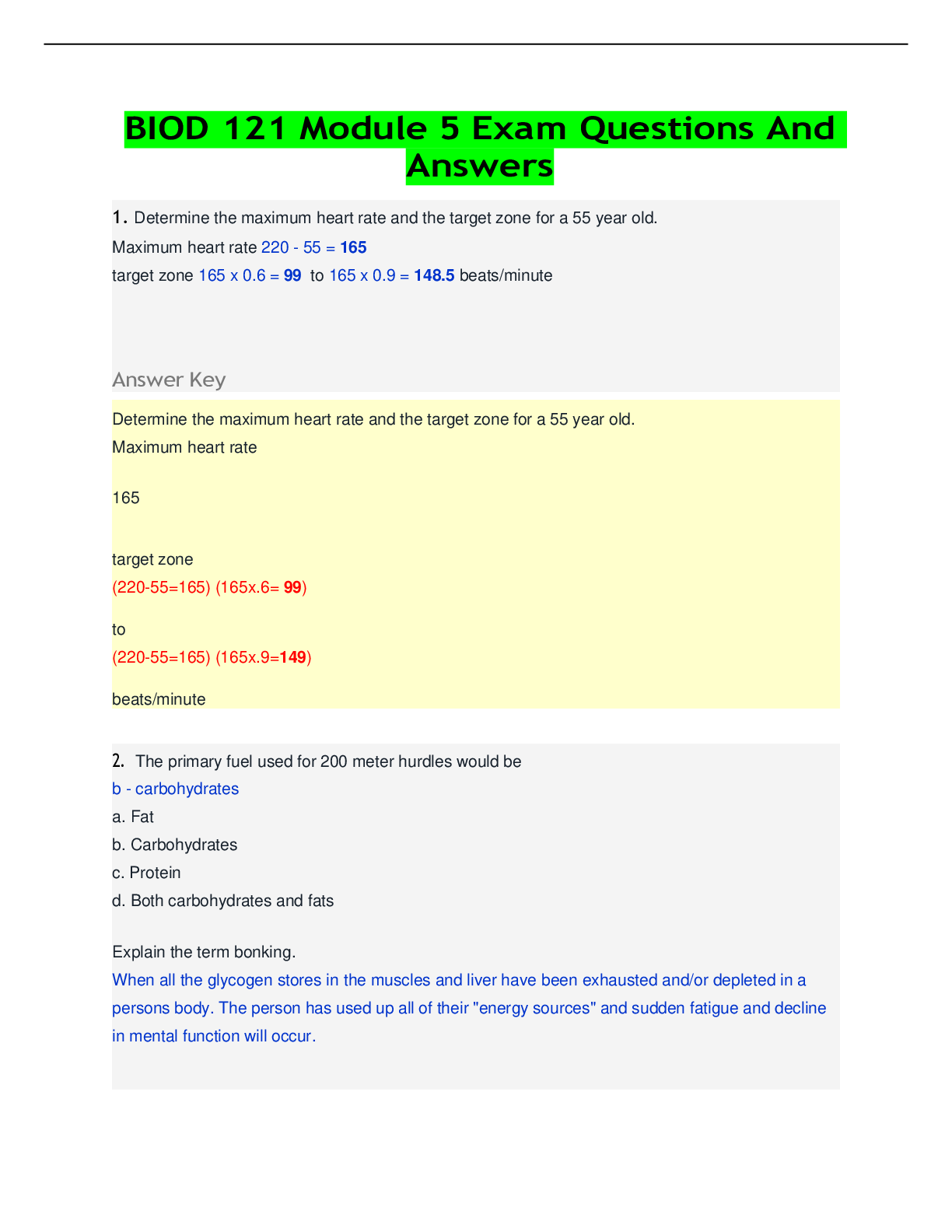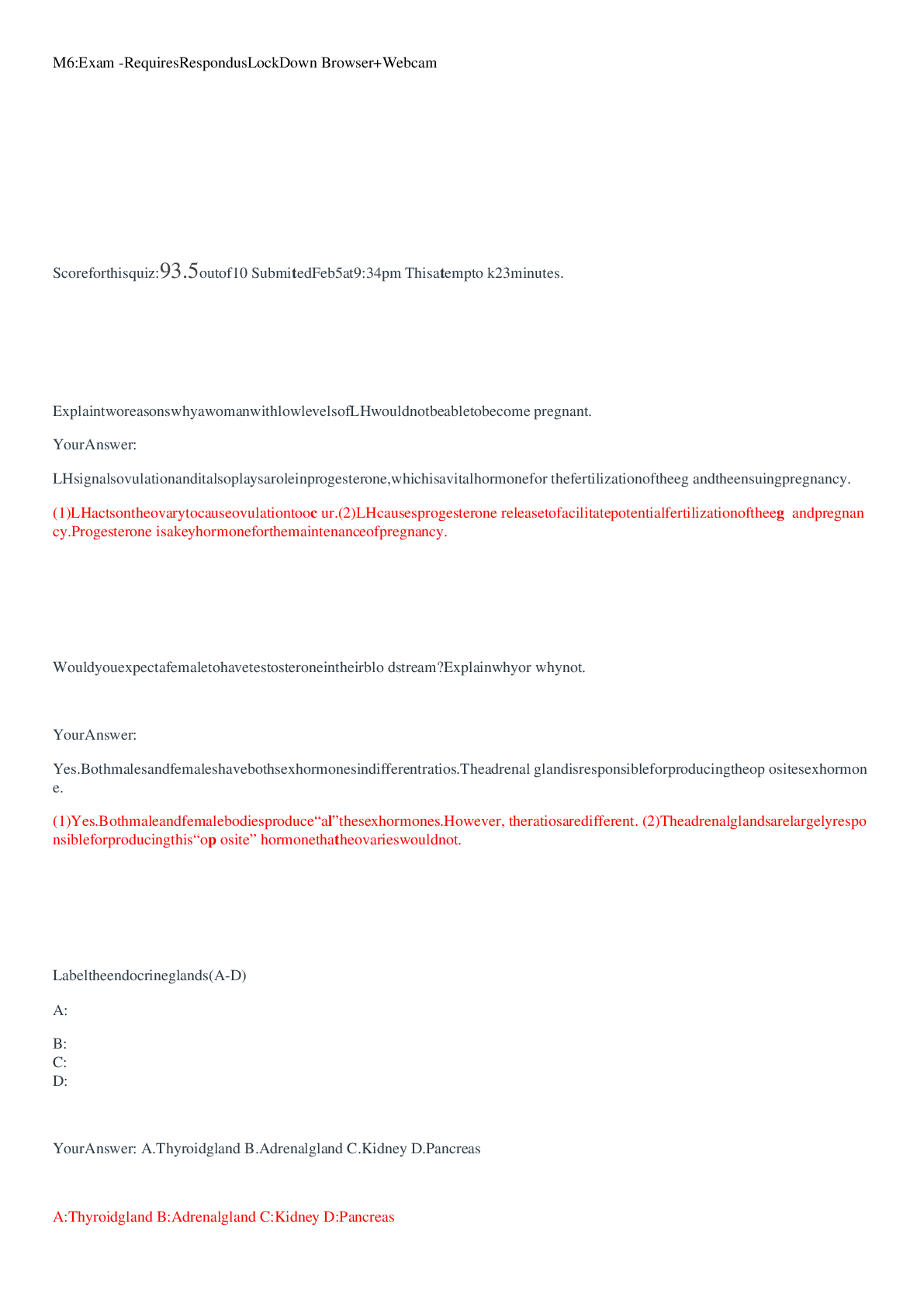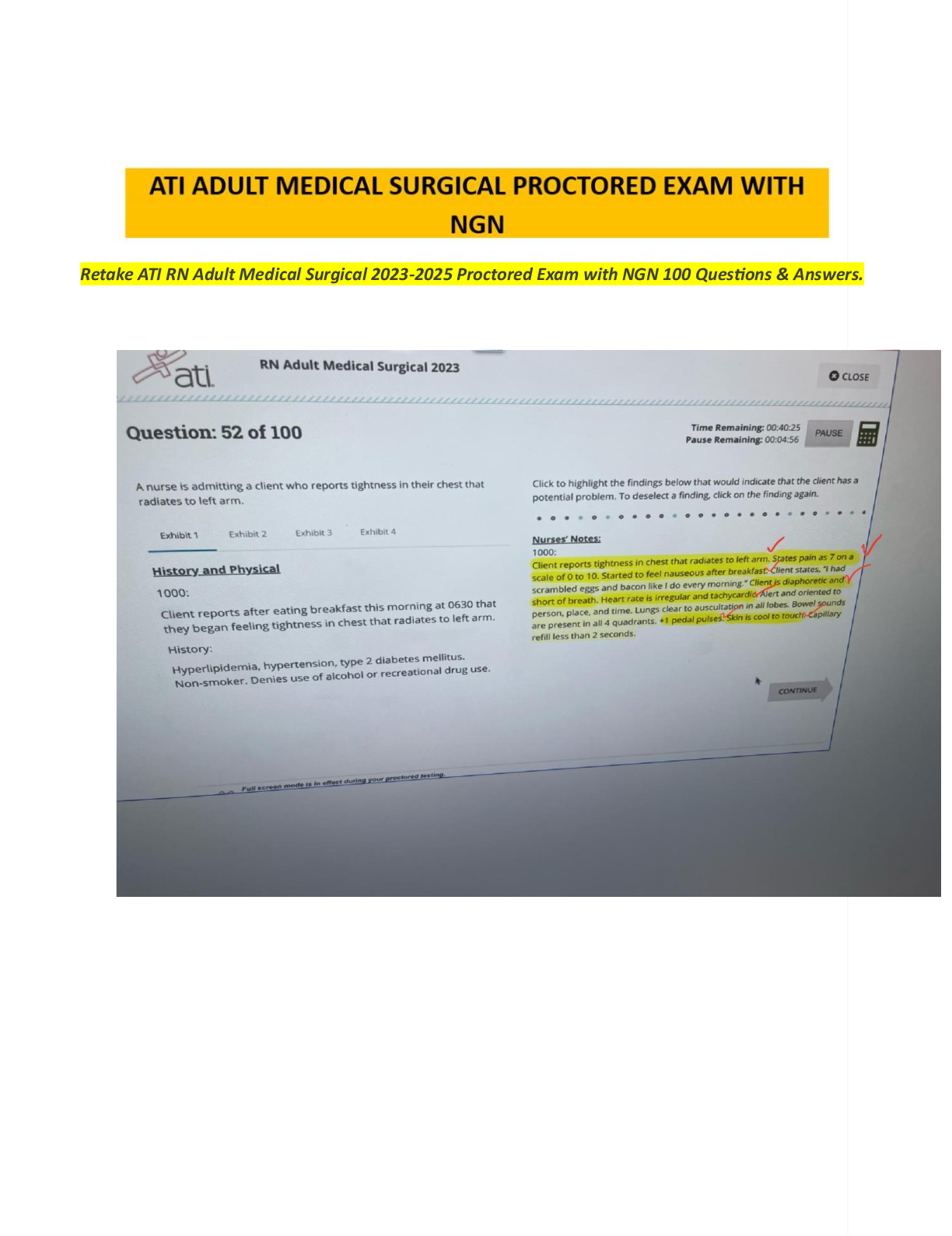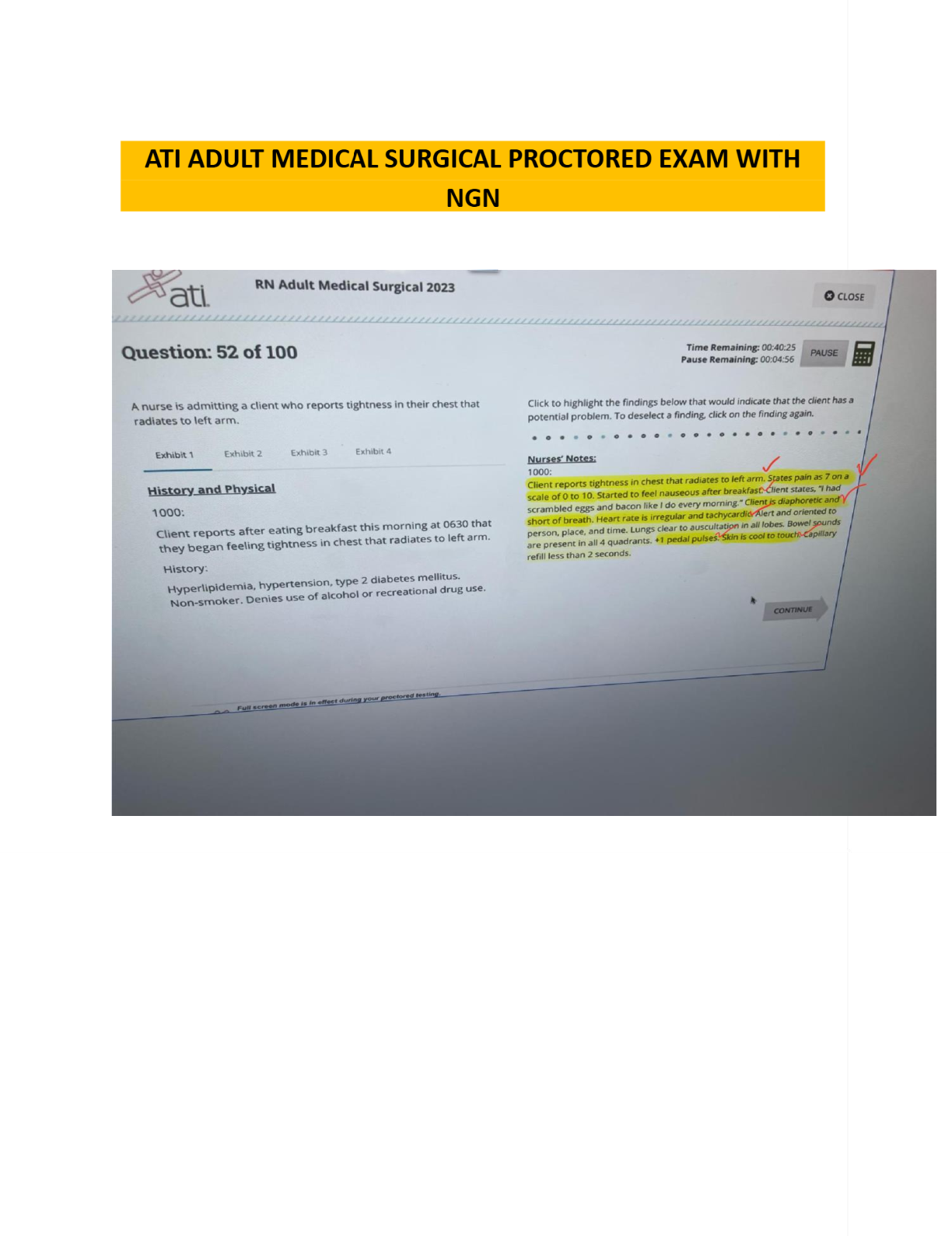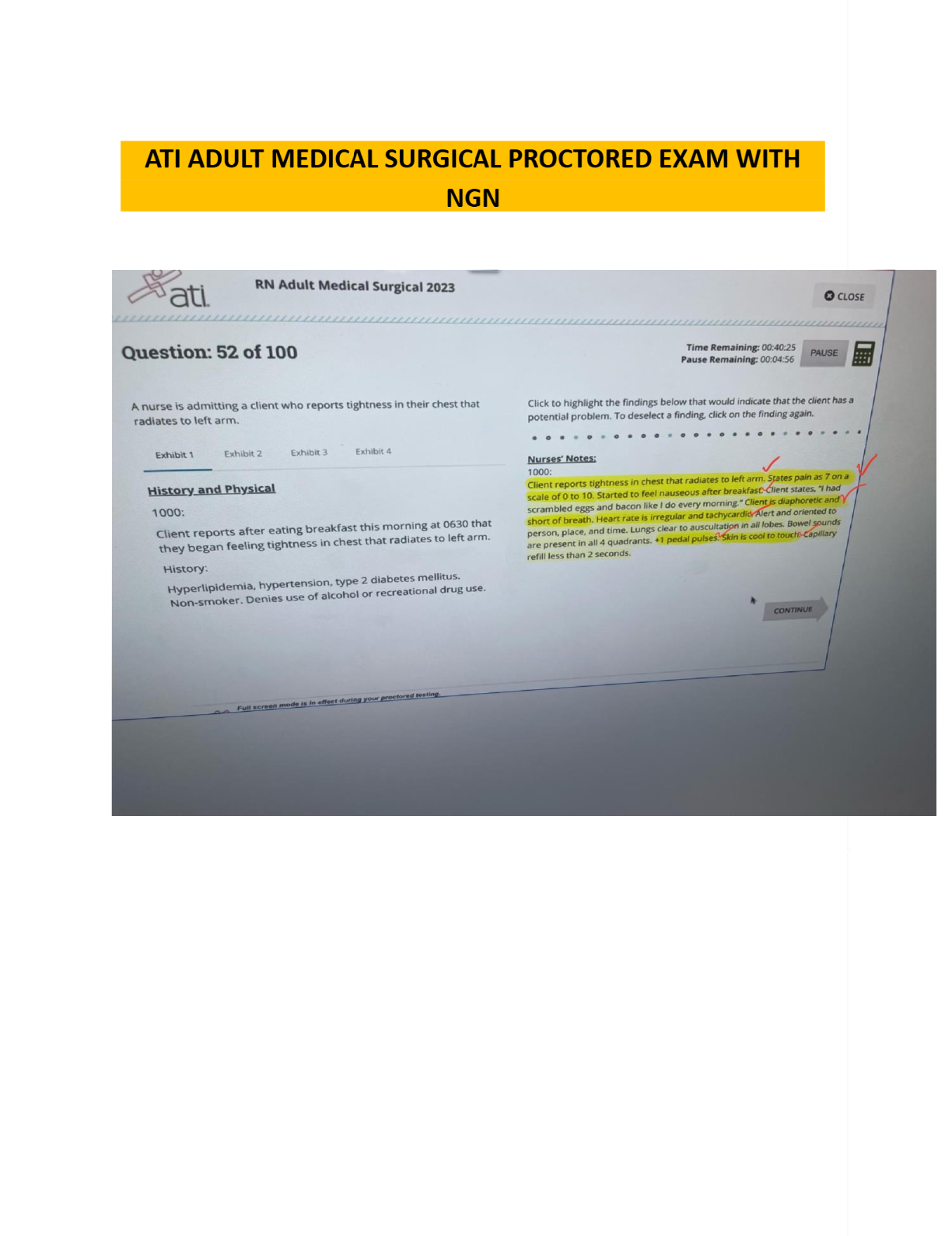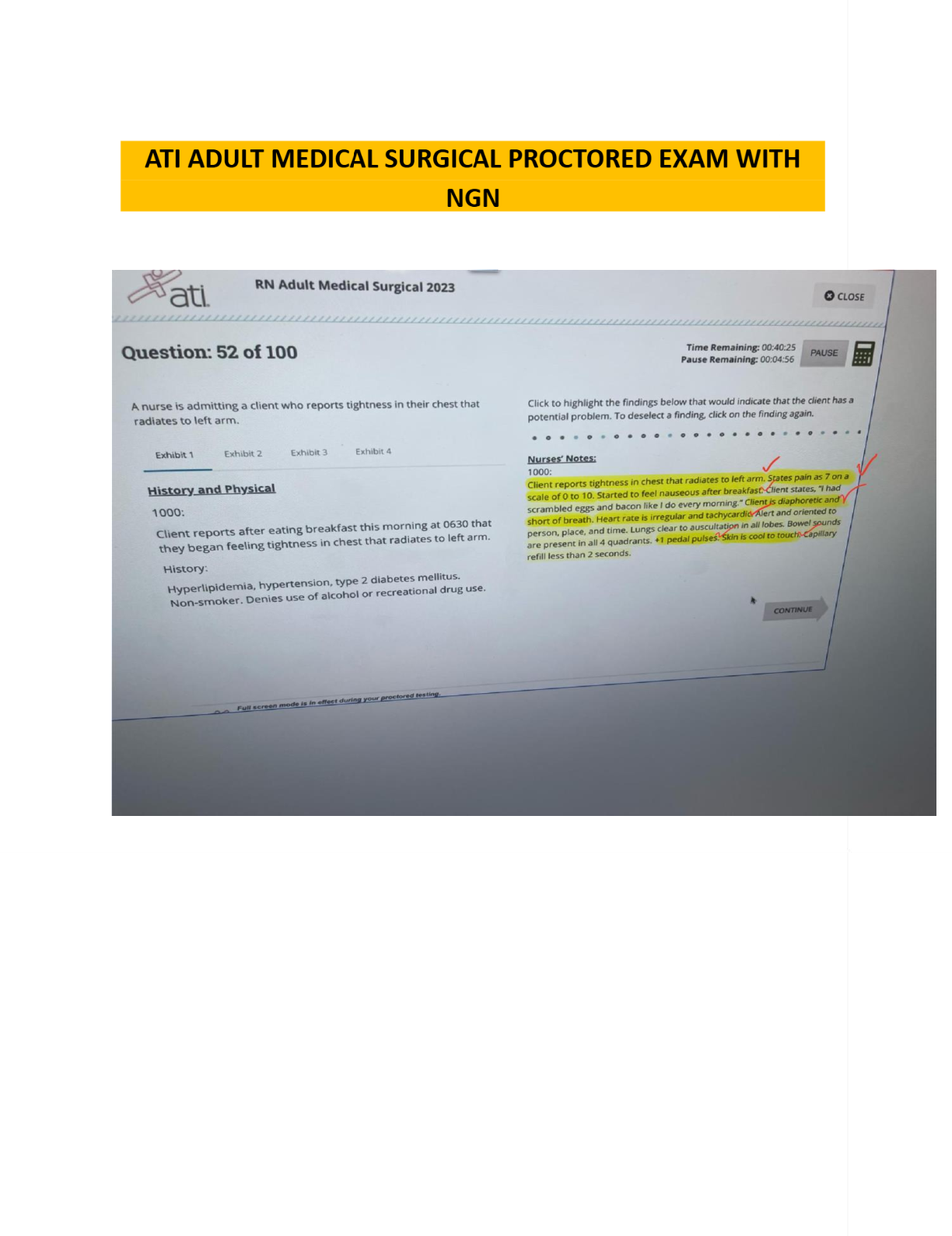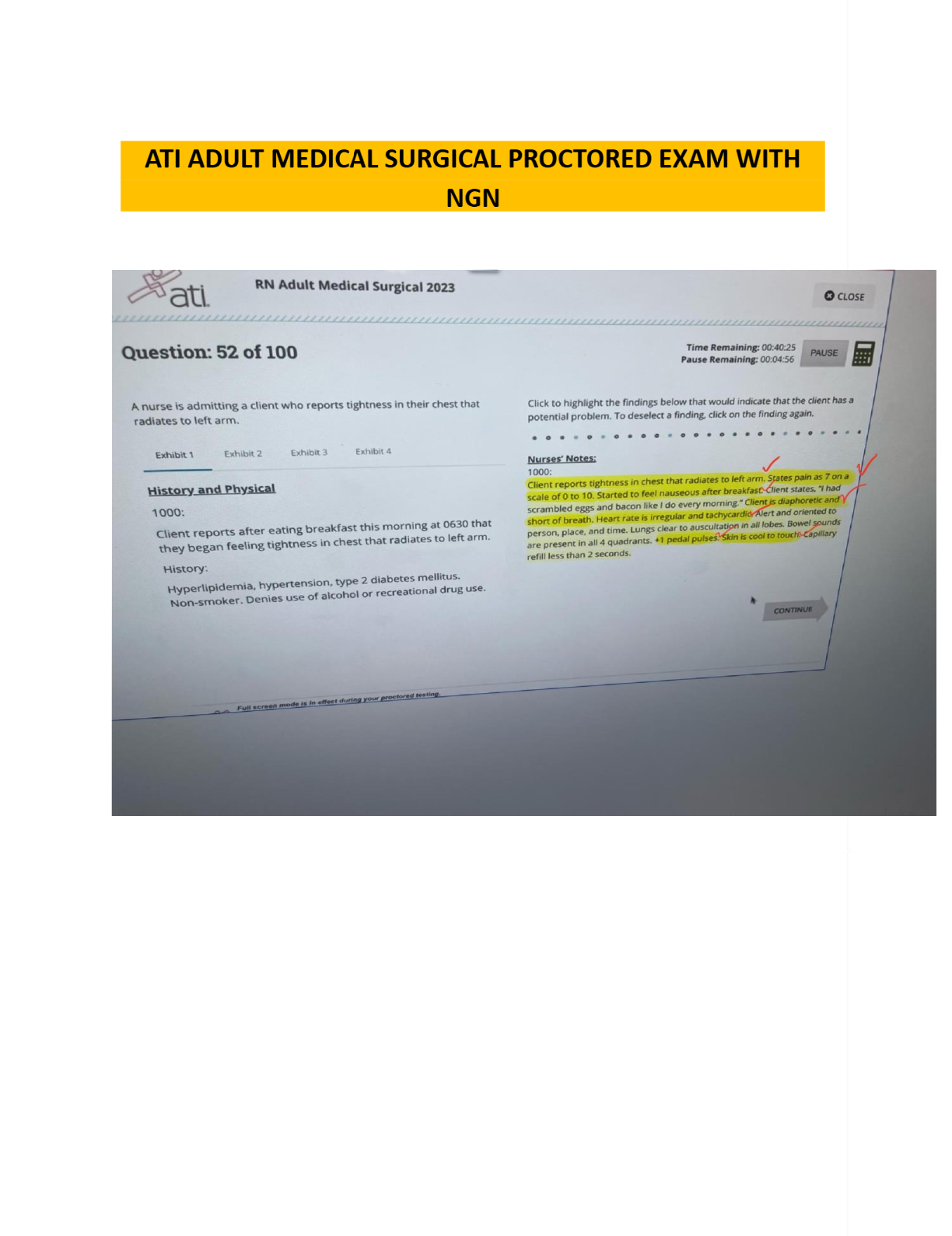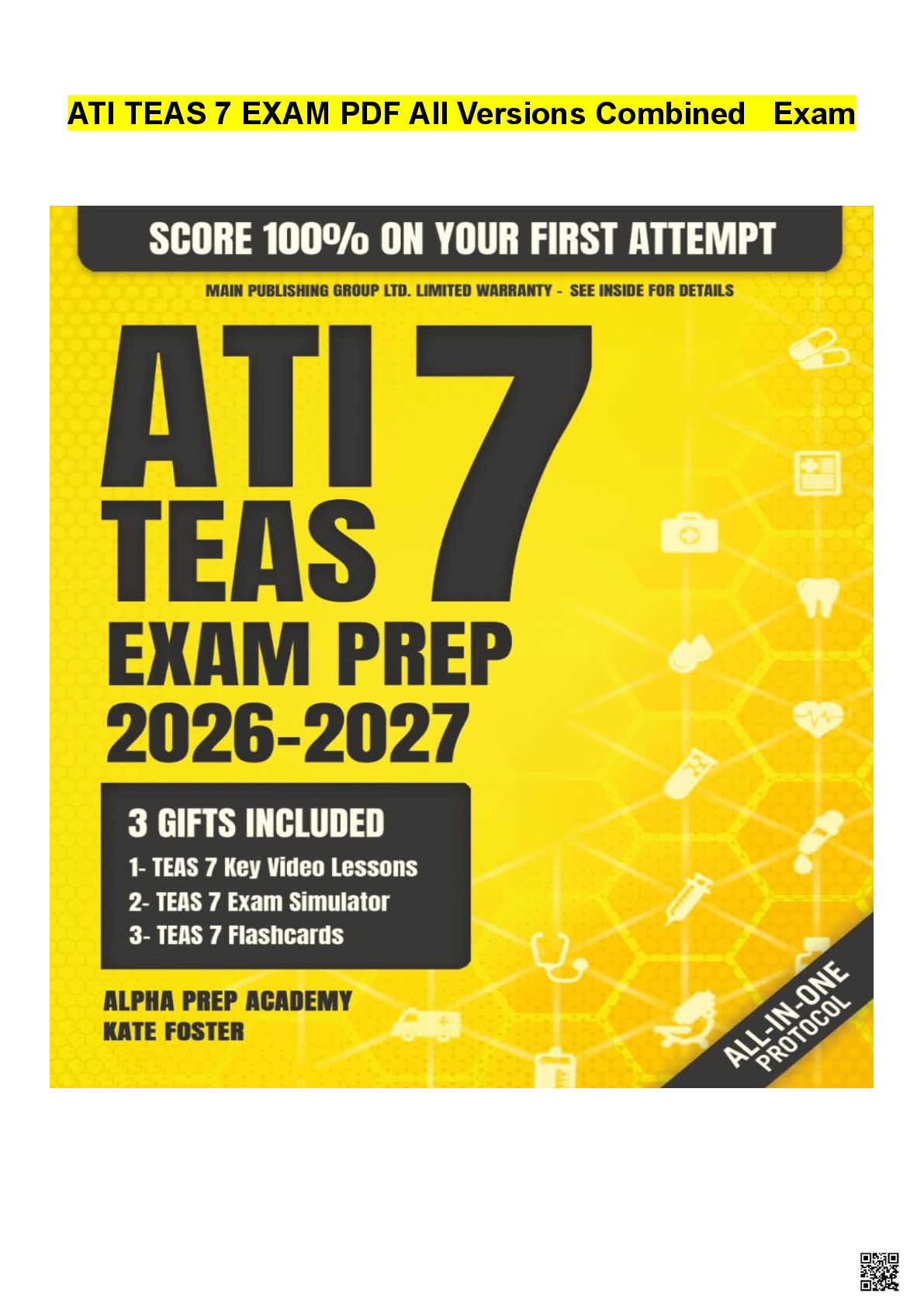ACQ Intermediate Systems Acquisition > EXAM > ACQ 202 Module 3 Exam, Part 1 Questions And Answers( Complete Solution Rated A)Top score (All)
ACQ 202 Module 3 Exam, Part 1 Questions And Answers( Complete Solution Rated A)Top score
Document Content and Description Below
Module 3 Exam, Part I (contains 30 questions) Clarifications Negotiations Solicitations Communications Communication Discussion Clarification Negotiation Lead Systems Engi neer Contracting Officer Dep ... uty Program Manager Program Manager Fact finding Soliciting Bargaining Negotiating True False Return on assets Open systems architecture Return on investment Profit margin requirements. Component C has the highest initial cost; however, due to its superior reliability, it is projected to lead to lower life cycle costs than Components A and B in the long run, and this will help meet the programs affordability goals. This is adequate justification for the team to select Component C. balancing of Affordability and Should Cost and technical activities.] True False True False Option 1 is better than Option 2 because its total weighted score is lower. Option 1 and Option 2 each score a total of 1.4; therefore, either choice is fine. Option 1 is better than Option 2 because its total weighted score is higher. Option 2 is better than Option 1 because its total weighted score is higher. Income Statement Balance Sheet Statement of Retained Earnings Statement of Cash Flows General and administrative (G&A) costs Direct labor costs Soft money costs Indirect labor costs Reasonable Allocable Consistent with Cost Accounting Standards Consistent with the terms of the contract Open systems Software-embedded systems Automated Information Systems Non-developmental items Helping IPT members to understand the interrelationship of components without physically changing the system. Quickly providing physical solutions to meet functional capabilities. Eliminating technical risk before production begins. Providing designs that will consistently exceed functional capabilities. Test and Evaluation Systems Engineering Technical Performance Measurement Configuration Management Supportability Maintainability Producibility Reliability Work Breakdown Structure (WBS) Trade Study Modeling and Simulation Technical Performance Measurement (TPM) 18.) One of the primary purposes of Technical Performance Measures is to: Serve as a record for configuration management. Track the effects of changes to the CDD. Serve as a tool to mitigate risk. Test the feasibility of the Work Breakdown Structure. Failure Modes and Effects Criticality Analysis (FMECA) Reliability Centered Maintenance (RCM) Level of Repair Analysis (LORA) Preventive Maintenance Support the companys vision Have as few top managers as possible Use only the matrix organizational structure Focus on only one area 21.) [Show More]
Last updated: 3 years ago
Preview 1 out of 52 pages
 (1).png)
Buy this document to get the full access instantly
Instant Download Access after purchase
Buy NowInstant download
We Accept:

Reviews( 0 )
$13.50
Can't find what you want? Try our AI powered Search
Document information
Connected school, study & course
About the document
Uploaded On
Mar 22, 2022
Number of pages
52
Written in
All
Additional information
This document has been written for:
Uploaded
Mar 22, 2022
Downloads
0
Views
157


